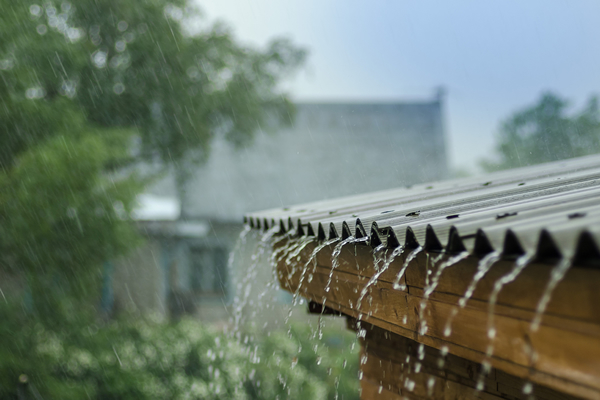Roof Waterproofing: Keeping Your House Dry
Author: Lee Polevoi | May 5, 2021
Roof waterproofing is (or should be) a primary concern for all homeowners. But for millions of residents in regions where rain and storms are a frequent possibility, that concern often becomes urgent.

Whether it's storming in the Midwest, hurricanes in Florida or heavy snowfall in Idaho, homeowners need to recognize signs of roof damage. They also need to know what they can do themselves to repair or prevent leaks and when it's necessary to call a professional roofing contractor.
Your Roof vs. Mother Nature
Roof damage caused by severe weather events takes many forms. Heavy rains, for example, can cause leaks when water drips through weakened flashing into a house. Shingles can be loosened by strong winds and rain. In winter, ice dams a key risk. These rafts of frozen slush form when thick, wet snow gathers on the roof and freezes in gutters and other breaks in the roof surface. Ice dams can pull down gutters, and may leak into the attic and ceiling after the ice eventually melts.
The design of some roofs makes them more vulnerable. Flat roofs are generally more susceptible to damage than sloped roofs because water can pool on a flat surface and take a long time to evaporate. But whatever the situation, waterproofing is necessary to ensure that rain and melting snow runoff as far as possible from the foundations of a house.
DIY Waterproofing Steps
Certain preventative steps should be part of every DIY-savvy homeowner's playbook:
- Disposing of fallen branches and dead leaves that collect in gutters and obstruct the flow of water.
- Keeping tree branches trimmed, particularly any limbs close to the house.
- Checking that shingles remain intact (not curled, broken or hanging).
- Regularly inspecting a roof for damage, especially after a severe rainstorm or winter weather.
Homeowners don't always have the necessary experience and skills to fully prevent or repair leaks, but you are the expert at noticing damage or changes to your home. Set the roof waterproofing process in motion by staying alert to the structural integrity of your roof at all times.
What a Roofing Contractor Can Do
For a more thorough and reliable waterproofing, it's best to call a professional roofing contractor. They can apply effective solutions that protect your home from water damage.
For example, liquid-applied membranes can prevent flat roofs from collecting rain and letting moisture gather beneath roofing materials. Waterproof roof coating is another flat-roof option. High-quality waterproofing silicone or other materials applied before the rainy season starts are a great way to reduce potential water damage to the roof. Finally, elastomeric roof coatings are generally effective with metal, asphalt and single-ply roofs.
These and other resources work best when applied by a licensed roofer. Not only do these individuals possess the skills and knowledge to do the job correctly, they also assume the physical risks of working on a roof (while taking the necessary safety precautions) so that less-skilled homeowners don't put themselves in harm's way in an attempt to waterproof their roof.
For some homes, a labor or manufacturer warranty might not cover the application of an unauthorized coating to a roof's surface. Hiring a professional roofing contractor will keep you from compromising your warranty.
Every home faces potential damage from severe weather. Safeguarding against such damage is every homeowner's responsibility. Thankfully, you don't have to figure things out on your own. For more information on how to care for your roof, review our Homeowner's Easy Roof Maintenance Checklist.